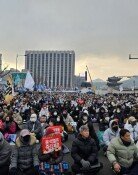Less nuclear and more renewable may produce unexpected side effects
Less nuclear and more renewable may produce unexpected side effects
Posted May. 09, 2020 07:56,
Updated May. 09, 2020 07:56
A working group in charge of developing the overall structure of the South Korea government’s energy policies announced on Friday the draft of the 9th Basic Plan on Electricity Demand and Supply to reduce the share of electricity supplied by nuclear power plants to below 10% by 2034. The plan also includes halving the number of coal power plants and increasing the share of renewable energy. Such a plan seems to produce various side effects, including the surge of electricity prices, but measures to address them have not been proposed.
The key to the working group’s draft is reducing the share of electricity supplied by nuclear power plants from the current 19.2 percent to 9.9 percent by 2034 and closing 30 coal power plants out of the existing 60. The plan proposes to supply electricity through LNG power generation and to increase the share of renewable energy from 15.1 percent to 40 percent. The plan drafted by a group of experts in energy, economy, climate, and environment, as well as civic group members, is likely to be finalized as a government plan after some revision.
Despite the polarizing opinions about anti-nuclear power policy under the Moon Jae-in administration along with emerging problems unexpected at the beginning of the administration, the working group’s draft is pushing forward. On top of the 8th Basic Plan on Electricity Demand and Supply in 2017, which included a decision to close 10 nuclear power plants, Hanbit Unit-3 has been added to the list under the new plan. The South Korean government has not consider the global trend, which even advanced countries have begun building new nuclear power plants during the past several years based on the understanding that nuclear is the only alternative available to reduce greenhouse gasses.
The hurried closure of nuclear power plants, which can produce electricity in the most economical way will drive up power generation costs. Replacing coal power plants with LNG power plants will help reduce fine dust levels but contribute to an electricity price increase. Renewable energy has low stability and is expected to maintain higher prices than anticipated for a considerable period.
The main reasons behind 1.36 trillion won loss of Korea Electric Power Corporation last year, which used to produce 10 trillion won in profits every year before the launch of the current administration, are the lower utilization of nuclear power plants and the expansion of LNG power generation. Key industries in South Korea, which have been achieving growth based on cheap electricity, are likely to be affected by an electricity price increase. It also affects the adoption of environment-friendly electric cars. Many will agree with the direction of eco-friendly energy itself. The problem, however, lies in the fact that the forced execution of policies may lead to the opposite effects of what they are intended for. Complementing the plan and adjusting its speed are desperately needed now, not acceleration.
Joong-Hyun Park sanjuck@donga.com
Headline News
- Joint investigation headquarters asks Yoon to appear at the investigation office
- KDIC colonel: Cable ties and hoods to control NEC staff were prepared
- Results of real estate development diverged by accessibility to Gangnam
- New budget proposal reflecting Trump’s demand rejected
- Son Heung-min scores winning corner kick







